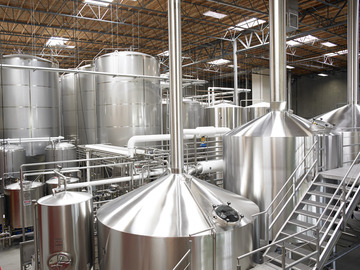Schoenhofen Brewery
Brewery
Beginning in the mid-1880s, Peter Schoenhofen was among a group of brewers in Chicago who transformed production methods and utilized expanding transportation options. By 1900, there were sixty Chicago breweries that collectively produced over 100 million gallons of beer per year. The Schoenhofen brewery building survived prohibition and competition from national brands. Breweries, food factories, and stockyards dotted the Chicago area by the mid-20th century. The Schoenhofen Brewery was typical of the region, although enterprises were not located in the city center, but along the new rail lines. No mention is made of the artesian springs as the source of the Brewery's water supply "In the basement of the old brewery building is the only artesian well still in existence in the Chicago area. At 1600 feet deep the well is capable of producing one million gallons of water a day for the next 100 years."
Subject ID: 89792
MoreBeginning in the mid-1880s, Peter Schoenhofen was among a group of brewers in Chicago who transformed production methods and utilized expanding transportation options. By 1900, there were sixty Chicago breweries that collectively produced over 100 million gallons of beer per year. The Schoenhofen brewery building survived prohibition and competition from national brands. Breweries, food factories, and stockyards dotted the Chicago area by the mid-20th century. The Schoenhofen Brewery was typical of the region, although enterprises were not located in the city center, but along the new rail lines. No mention is made of the artesian springs as the source of the Brewery's water supply "In the basement of the old brewery building is the only artesian well still in existence in the Chicago area. At 1600 feet deep the well is capable of producing one million gallons of water a day for the next 100 years."
Subject ID: 89792
Subject ID: 89792
